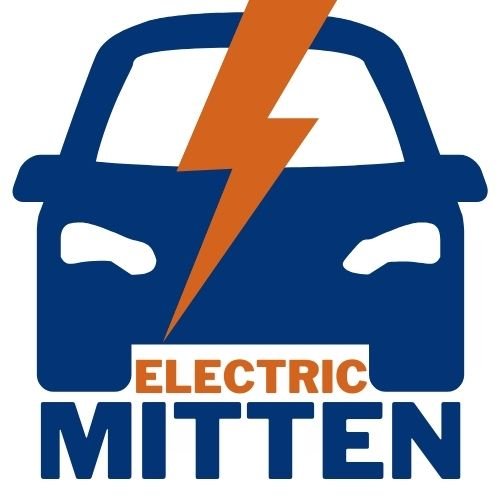Mercedes Testing EQV in Arctic Circle
In preparation for the launch of the Mercedes-Benz EQV in the second half of this year, Daimler subjected it to cold-weather testing in Arjeplog, Sweden. Temperatures reached as low as -30 degrees Fahrenheit. One of the many EQV features tested was the integrated fast-charging, which can recharge the van from 10 to around 80 percent of its capacity in 45 minutes, even in the freezing cold. That would have come in very handy on my recent trip to Chicago!
"In this final winter test, we demanded everything of the EQV – and it performed very well. We used these extensive tests for the last milestones on the way to market readiness"
-Benjamin Kaehler, Head of eDrive@VANs at Mercedes-Benz Vans
Initial specs give a top speed of up to 99mph, and 260 miles range on the highly optimistic NEDC scale. I don’t believe that US availability of the EQV has been confirmed either way at this point, but here’s hoping. In the meantime, below you can find pics of the all-electric van in the snow, and some older videos of the EQV not in the snow. Enjoy!
Press Release:
“Customers, whether private or commercial users, place the same demands on electric vehicles as they do on equivalent vehicles with combustion engines: complete reliability and functionality – even in severe conditions. That was exactly what the winter test of the Mercedes-Benz EQV 300 (combined power consumption: 26.4-26.3 kWh/100 km; combined CO2 emissions: 0 g/km)1 focused on. For several weeks, the development team subjected the first purely battery-electric premium MPV from Mercedes-Benz to an endurance test in Arjeplog, Sweden under severe climatic conditions. At temperatures reaching minus 30 degrees with icy roads and deep snow, the EQV proved its operability under extreme conditions. Thus, the vehicle completed one of its last milestones on the way to its market launch in the second half of 2020.
The vehicles were put through numerous complex tests on the test site close to the Arctic Circle. Over 30 engineers, electronics experts and mechanics from Mercedes-Benz Vans were involved: for example, they drove over frozen lakes and measured the effects of extreme cold on handling, ergonomics and comfort, using specialised measuring technology. The starting behaviour and low-temperature resistance of the drive components, software and interfaces, and the thermomanagement of the entire vehicle, were tested in cold cell facilities.
A further important element of the test: charging behaviour. The EQV is equipped with an integrated fast-charging function with which it can recharge from 10 to around 80 percent of its energy in 45 minutes. This is a great advantage, particularly when travelling, but it must function reliably regardless of the temperature.
The advantages of electromobility in cold conditions
The Mercedes-Benz EQV neatly uses the advantages of electromobility in cold conditions: EQV drivers can enter a departure time via the Mercedes me app from the comfort of their home or office, so as to preheat the interior to the desired temperature and melt any snow or ice on the windows. If the EQV is plugged in to a charging point, the required electricity does not reduce the range as it is taken from the mains supply and not from the drive battery. This is a plus in comfort.
Reliable handling in ice and snow is also essential. On the test drives, the EQV showed that the low, central positioning of the lithium-ion battery in the underbody has a positive effect on the vehicle's handling, specifically under winter conditions. The conclusion of the testers was that the EQV is fit for customer operations – even in arctic conditions.
"In this final winter test, we demanded everything of the EQV – and it performed very well. We used these extensive tests for the last milestones on the way to market readiness", said Benjamin Kaehler, Head of eDrive@VANs at Mercedes-Benz Vans. "Particularly with regard to thermal management, so important to electric vans, we were able to gain insights which will make the EQV safer and more comfortable."
EQV as the second model of the "EQ" technology brand
The market launch of the EQV will be in the second half of 2020. After the EQC (combined power consumption: 20.8–19.7 kWh/100 km; combined CO2 emissions: 0 g/km)2, this electric MPV is the second model of the Mercedes-Benz "EQ" technology brand. The EQV is available in two wheelbases and with a permissible gross vehicle weight of 3500 kilogrammes. The high-voltage battery is integrated into the underbody so that no space in the interior is sacrificed. By flexible addition of single or bench seats, the six-seater EQV can be converted to seat seven or even eight people.
A further highlight of the EQV is the MBUX multimedia system with touchscreen, intelligent voice control with the key word "Hey Mercedes" and EQ-specific displays and settings. This includes EQ-optimised navigation, for example, which automatically calculates a fast, comfortable route with few charge stops and short charging times. The electric drivetrain of the EQV is located on the front axle. Peak output is 150 kW (204 hp), the Mercedes-Benz EQV achieves a maximum torque of up to 362 newton metres. It can reach a top speed of 160 km/h.”












